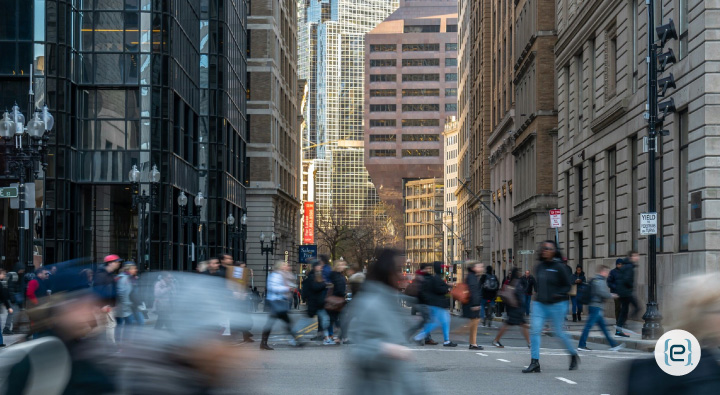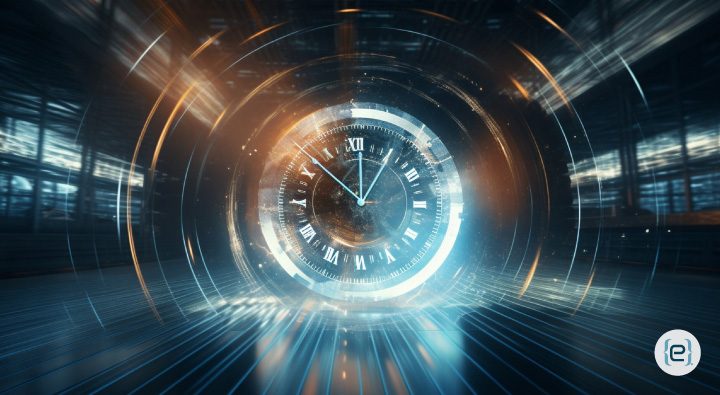Imagine a man from 1800 America—call him Thomas—who has spent his life working as a farmer in a small rural town. His world consists of horse-drawn carriages, flickering oil lamps, and the steady rhythm of the seasons. One day, Thomas wakes up in 2025, surrounded by towering skyscrapers, speeding cars, and an endless hum of technology. He has no idea how he got here, but he knows immediately that this is not the world he once knew.
How would Thomas react to this dizzying leap in time? Let’s take a journey through his eyes, as he stumbles through a future filled with wonders—and challenges—he could never have imagined.
The Initial Shock of Arrival
The first thing Thomas notices is the noise. He’s used to the quiet of the countryside, where the loudest sounds are the wind rustling through the trees or the distant cry of a rooster. But now, he’s surrounded by a constant din: the honking of cars, the hum of air conditioning units, the murmur of a crowd. He stares up at the buildings towering above him, structures that seem to scrape the sky, their glass surfaces reflecting the sun in dazzling displays. How could anyone build something so high?
His heart races as he watches strange, horseless carriages speed past him—faster than anything he’s ever seen. The road beneath his feet is hard and black, not dirt, and the people walking by all seem to be in a hurry, glued to glowing rectangles they carry in their hands. Thomas’s mind spins. “Where are the horses? Where are the carriages? What kind of magic moves these machines?”
Reaction to Technology
Technology is where Thomas feels the most out of place. Someone hands him a smartphone, trying to explain how it works. He sees moving images on the screen, hears voices coming from a little box, and watches in amazement as people’s faces pop up, talking in real-time across impossible distances. “Sorcery!” he might think, struggling to understand how voices and faces could travel through thin air.
Elevators? He’s terrified at first—the idea of a room that moves up and down inside a building defies everything he knows about physics. He refuses to step inside one until a kind stranger convinces him it’s safe. Television confuses him too—people are acting out stories inside a little box? How is this possible?
Everywhere he turns, there’s something new and perplexing. Cars, airplanes, computers, and Wi-Fi—words that mean nothing to him. His mind keeps drifting back to simpler times, to wooden plows and candlelight. But he’s also fascinated. There’s an undeniable allure to this magic he can’t quite grasp.
Encounter with Social Changes
Beyond the technological marvels, Thomas is astounded by how society itself has changed. Walking down the street, he sees women dressed in pants, working in offices, and leading conversations. In his time, women were expected to remain at home, caring for the family. The idea that they could have the same opportunities as men is foreign to him, but as he observes, he begins to see how much society has transformed for the better.
Diversity is another shock. Thomas encounters people from different races and backgrounds walking side by side, working together without a second thought. In his world, such interactions were far less common, and he marvels at the ease with which people interact in 2025. He feels a mixture of awe and confusion, trying to reconcile the world he knew with this new reality.
Then there’s the language. While English hasn’t changed dramatically, the way people speak has. Modern slang and expressions throw him off, and he often finds himself lost in conversations filled with terms like “streaming,” “selfie,” and “hashtags.”
Food and Transportation
When Thomas sits down for a meal, he expects to see something familiar—a stew, perhaps, or freshly baked bread. Instead, he’s handed fast food: a hamburger wrapped in shiny paper and a side of fries. The taste is strange, artificial compared to the farm-to-table meals he’s used to. “This is food?” he wonders, missing the simplicity of the dishes his wife would have prepared over an open fire.
Public transportation leaves him equally bewildered. The idea of buses, subways, and planes—all moving massive amounts of people at incredible speeds—seems impossible. He stares in disbelief as metal tubes take to the skies, carrying passengers across the globe in mere hours. “How do they fly without wings?” he mutters, watching planes disappear into the clouds.

Reflections on Modern Society
As the days pass, Thomas begins to reflect on this strange new world. There’s no denying the incredible advancements—electricity, medicine, and transportation have made life easier and more efficient. He sees people living longer, healthier lives thanks to advances in health care that were unimaginable in his time.
Yet, he also notices a certain disconnection. People seem glued to their phones, barely interacting with each other in meaningful ways. The close-knit communities he once cherished feel absent in this fast-paced world. Life moves at such a rapid pace that he wonders if anyone truly has time to appreciate it.
He misses the quiet of his small town, the simplicity of human interaction without the interference of machines. There’s a part of him that longs for the past, where time felt slower, and every action, every conversation, had a more personal touch.
Encounter with Modern Entertainment
Modern entertainment is another world altogether for Thomas. When he hears modern music—loud, electronic beats blasting from speakers—he covers his ears in discomfort, longing for the soft tunes of a fiddle or a piano. The idea of watching entire stories unfold on screens feels bizarre. In his day, stories were told around a fire, passed down from generation to generation with heart and soul.
Despite his reservations, there’s something captivating about the bright lights, the moving pictures, and the sheer energy of it all. While he might never fully understand it, Thomas can’t help but appreciate the creativity and imagination behind this new form of storytelling.
A Sense of Longing and Curiosity
Over time, Thomas feels a deep sense of conflict. He’s captivated by the wonders of 2025—the technology, the progress, the convenience. But there’s a part of him that longs for the quiet, for the world he knew, where life was simple, and the focus was on family, community, and hard work.
Would he stay in this future world, adapting to its rapid pace and endless wonders? Or would he choose to return to 1800, where life moved slower but felt more tangible, more connected?
The Ultimate Question: Adapt or Return?
In the end, Thomas must confront the ultimate question: could he truly adapt to this new world, or does he belong in his own time? The future has its marvels, but it also comes with a sense of loss—a loss of connection, of simplicity, of the human experience as he once knew it.
As he weighs his options, he begins to realize that while the future is full of possibilities, there’s something timeless about the values of his past. Perhaps, in the end, it’s not about choosing one time over the other, but about finding a balance between progress and the things that make life truly meaningful.
Conclusion
Thomas’s journey through 2025 is one of awe, confusion, and reflection. He marvels at the technological advancements and the strides society has made, yet he feels a deep connection to the simplicity and slower pace of the world he left behind. His experience reminds us that while progress is essential, there’s value in remembering where we came from—and in holding on to the human connections that make life truly rich.
As we race forward into the future, perhaps we too can learn to appreciate both the marvels of our modern world and the simpler values of the past. If you’re interested in how technology can enhance your business while maintaining personal connections, contact eMazzanti today to learn how we can help you navigate the future.







